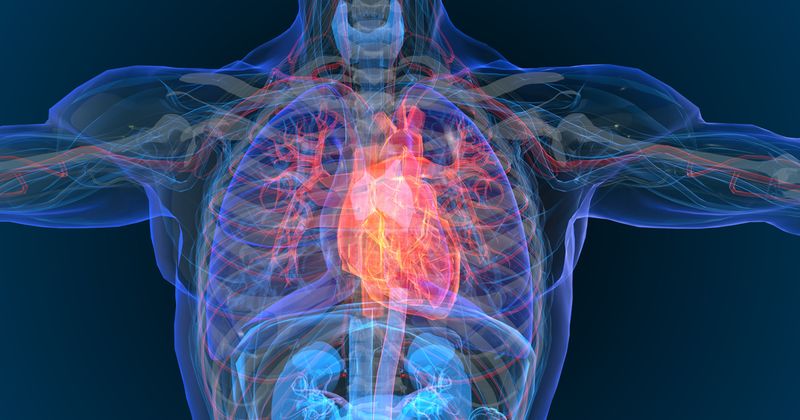In PCI for MI, spironolactone does not meet primary endpoints but may show benefit in HF
Key takeaways:
- In patients who had a heart attack but not left ventricular dysfunction, spironolactone did not improve a composite of outcomes vs. placebo.
- Spironolactone reduced risk for new or worsening heart failure.
CHICAGO — In patients with acute MI who underwent PCI, spironolactone did not improve the primary composite outcomes but was linked to reduced risk for new or worsening HF, according to new data from the CLEAR SYNERGY (OASIS-9) trial.
As Healio previously reported, CLEAR SYNERGY (OASIS-9) was a 2x2 factorial trial in which patients with acute MI who underwent PCI were randomly assigned to spironolactone or placebo and colchicine or placebo. Sanjit Jolly, MD, MSc, interventional cardiologist and professor of medicine at McMaster University in Hamilton, Ontario, Canada, presented the spironolactone results at the American Heart Association Scientific Sessions. He previously presented the colchicine results, in which colchicine did not improve outcomes in this population, at TCT24. Both sets of results have been published in The New England Journal of Medicine.

The trial included 7,062 patients (mean age, 61 years; 20% women; 95% with STEMI; < 1% with prior HF) at 104 centers in 14 countries. The median follow-up was 3 years.
“What is unclear is that in patients [with MI] who do not have heart failure, is routine administration of [mineralocorticoid receptor antagonists] beneficial,” Jolly said at a press conference.

In the intention-to-treat analysis, there was no difference between the groups in the first primary outcome of CV death or new or worsening HF (spironolactone, 1.7%; placebo, 2.1%; HR = 0.89; 95% CI, 0.73-1.08; P = .23) and the second primary outcome of CV death, MI, stroke or new or worsening HF (spironolactone, 7.9%; placebo, 8.3%; HR = 0.95; 95% CI, 0.8-1.12; P = .52), Jolly said at the press conference.
However, in an on-treatment analysis which excluded anyone who stopped their study drug on day 1 and censored anyone who quit their medications subsequently at 7 days after quitting, the first primary outcome favored the spironolactone group (1.5% vs. 2%; HR = 0.79; 95% CI, 0.63-1; P = .047), as did the second primary outcome (5.8% vs. 7.2%; HR = 0.83; 95% CI, 0.69-1; P = .046), he said.
High discontinuation rates
“We like for [the analyses] to be concordant, but the caveat is that we saw about a 26% drug discontinuation rate in the trial, which was higher than we expected,” Jolly said at the press conference. “That’s when the on-treatment analysis becomes more important. When you have a 2x2 factorial design, it’s always great because you can answer two questions in one, but occasionally there may be a price to pay if one [study drug] is less tolerable than the other.”
In both analyses, the secondary outcome of new or worsening HF favored the spironolactone group (intention to treat: 1.6% vs. 2.4%; HR = 0.69; 95% CI, 0.49-0.96; on-treatment: 1.3% vs. 2%; HR = 0.67; 95% CI, 0.46-0.98), Jolly said.
Serious adverse events occurred at similar rates (spironolactone, 7.2%; placebo, 6.8%; P = .54), but the spironolactone group had higher rates of hyperkalemia leading to study drug discontinuation (P = .01) and gynecomastia (P < .001), he said.
“Routine spironolactone post-MI did not reduce either of our coprimary outcomes,” Jolly said at the press conference. “We did see about a one-third reduction in new or worsening heart failure. The on-treatment analysis suggests a benefit; however, this is exploratory and hypothesis-generating. The most important thing is, in fact, over the last 20 years, outcomes post-MI have improved remarkably, so it is more challenging to show a difference. We are looking at heart failure event rates of 2% or 3%, whereas 20 years ago, it was probably 10% or 15%.”
Low event rates

In a discussant presentation at the press conference, Roxana Mehran, MD, FACC, FACP, FCCP, FESC, FAHA, FSCAI, professor of medicine and director of interventional cardiovascular research and clinical trials at the Zena and Michael A. Wiener Cardiovascular Institute at Mount Sinai School of Medicine, said: “It is important to note that most of these were STEMI patients who were stable with very little [left ventricular] dysfunction or heart failure at their presentation. Please note how low those event rates are for cardiovascular death and new or worsening heart failure.”
She said it “makes sense” that spironolactone would reduce risk for new or worsening HF, “but more granular data are needed to identify which patients might benefit the most.
“These results may have been impacted by a lower-than-expected event rate and the concomitant administration of colchicine,” she said. “There was more diarrhea in the colchicine arm, and one doesn’t know if there was higher discontinuation of the drugs due to this.”


